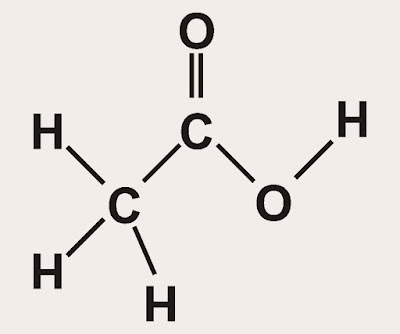Fermentation Produces Acetic Acid, Which Is What Gives Vinegar Its Characteristic Smell
 |
| Acetic Acid |
Acetic Acid is a colourless
liquid chemical compound found in nature. Acetic Acid is also known as ethanoic
Acid. It is created through the methanol carbonylation process. Acetic Acid is
widely used as a key intermediate in the manufacture of chemical products such
as PTA, vinyl acetate monomer (VAM), and others. Acetic Acid is used
extensively in the pharmaceutical, rubber, plastics, construction, and paints
and coatings industries.
The high demand for polyvinyl
acetate (PVA) and polyvinyl alcohol (PVOH), two key derivatives of vinyl
acetate monomer, is boosting growth. Polyvinyl acetate is commonly used in a
variety of applications, including packaging films, thickeners, and
photosensitive coatings. Because of its excellent adhesion properties,
polyvinyl alcohol is widely used in paints and paper coatings. As a result,
rising demand for polyvinyl acetate and polyvinyl alcohol is hastening the rise
of acetic Acid.
According to the Research Report by Coherent Market Insights, The
global Acetic
Acid Market was estimated to be valued more than US$ 10,551.4
million in terms of revenue in 2019 and is predicted to grow at a CAGR of 9.5%
during the forecast period (2020 to 2027).
Acetic Acid has the chemical
formula CH3COOH and is also known as ethanoic Acid, ethylic Acid, vinegar Acid,
and methane carboxylic Acid. Acetic Acid is a byproduct of fermentation that
gives vinegar its distinctive aroma. Vinegar contains approximately 4-6% acetic
Acid in water. More concentrated solutions are available in laboratories, and
glacial acetic Acid is pure acetic Acid containing only traces of water.
Acetic Acid is the 33rd most
produced chemical in the United States. Acetic anhydride, cellulose acetate,
vinyl acetate monomer, acetic esters, chloracetic Acid, plastics, dyes,
insecticides, photographic chemicals, and rubber are all made from acetic Acid.
Other commercial applications include the production of vitamins, antibiotics,
hormones, and organic chemicals, as well as use as a food additive. Natural
acetic Acid concentrations in foods range from 700 to 1,200 mg/kg in wines, up
to 860 mg/kg in aged cheeses, and 2.8 mg/kg in fresh orange juice.
Rapid global industrialization
and urbanisation are expected to provide lucrative growth opportunities. The
rise in construction industries, combined with the increasing demand for
high-performance plastics from the end-user industry due to their durability,
is expected to fuel growth once more. Furthermore, rising automobile production
in the developing world is expected to boost demand for plastic and rubber
products, further boosting growth.



Comments
Post a Comment